
Utilizing the Natural Forms of Wood
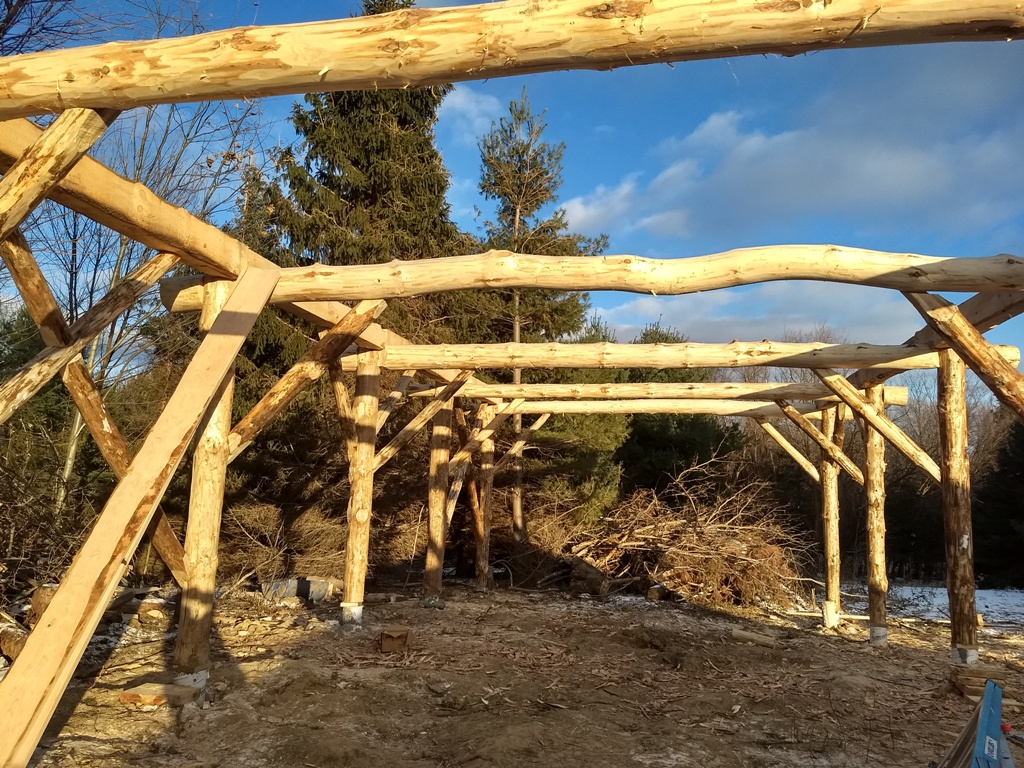
Why do so many people feel attracted to wooden objects? There seems to be a universal appeal to the material. It’s aesthetically beautiful, adaptive and a relatively inexpensive.
The concept of animism has always fascinated me. The idea that all objects, animate and inanimate, contain a sort of spirit is a captivating idea. One can certainly identify with it in the presence of the awe inspiring natural as well as the buzzing phenomena of modern cities. What makes wood unique as a material is it was once living and carries a sense of life within it.
My love of forests and trees led me to woodworking. I’ve always been drawn to the naturally occuring useful shapes present in the trees of the world. Anyone who has had a chance to split out a spoon blank from a crooked piece of wood or seen the graceful curves of a root knee knows the appeal. Why am I sharing this? I’ve had the opportunity in the last few months to work on some projects that incorporate and utilize the natural wooden forms and I’m reflecting on why I love it so much.
Here’s some shots of a grindbygg barn project I worked on for some friends in need of a winter cattle housing. These fine folks purchased a farm that had been enrolled in a conservation program and subsequently planted with a small pine plantation. As they reclaimed some of the plantation area for pasture we thought it would be a perfect opportunity to utilize the material on site to build a structure. This barn is a Norwegian style of timber frame called grindbygg. It contains a necked tying joint which is it’s defining feature.
One of the attributes that draws me to this style of frame is that it accommodates the use green (freshly cut) minimally processed or round pieces.
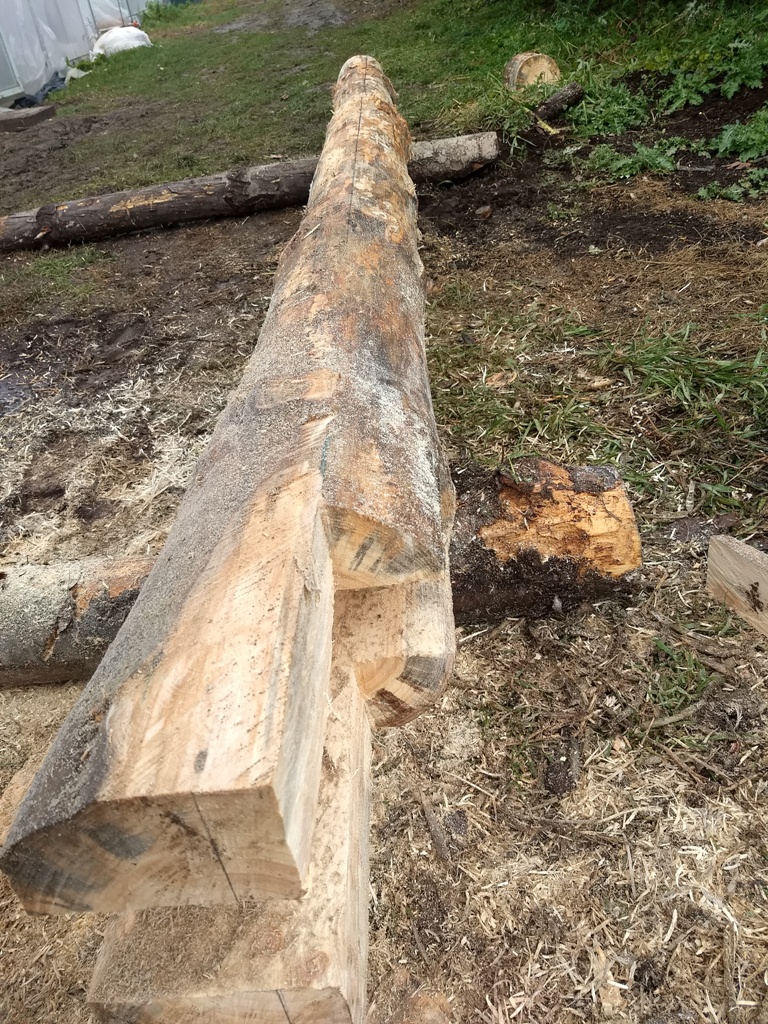
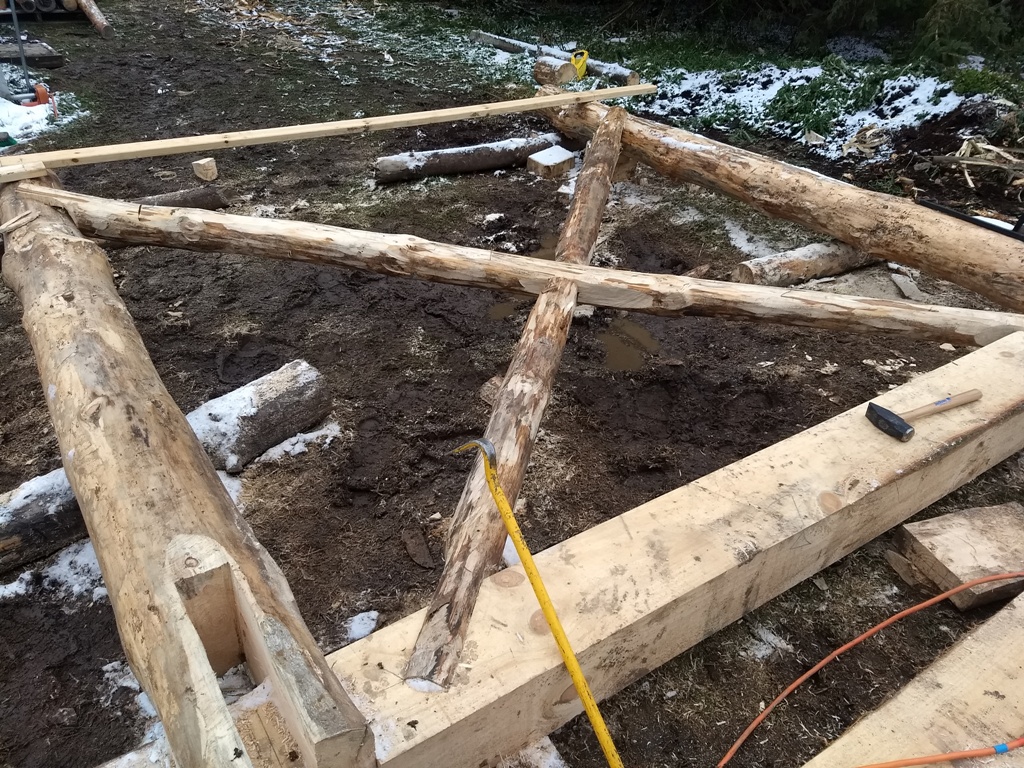
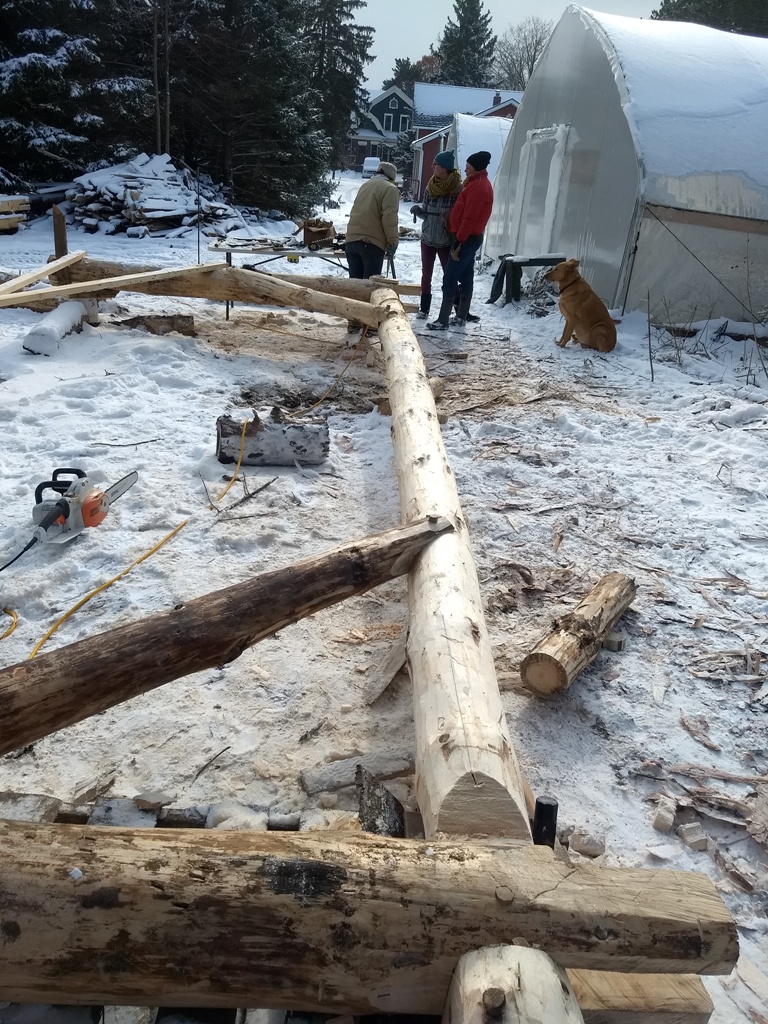
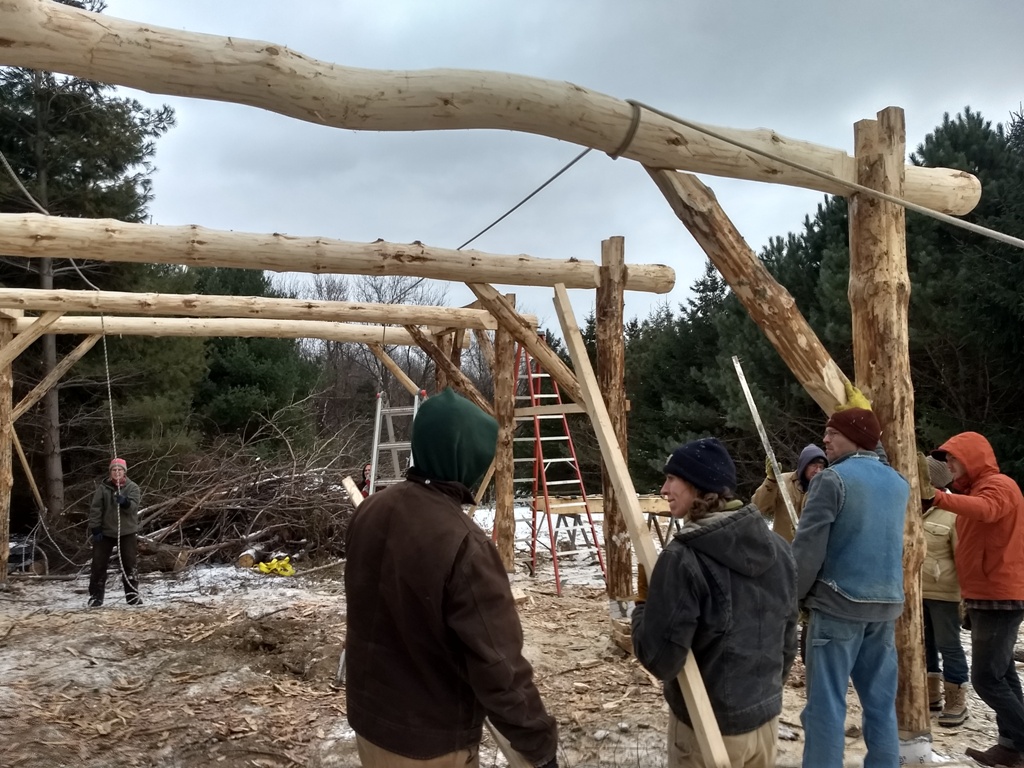
We were were cutting some of the frame components on site, peeling the logs and incorporating them directly into the frame. The project isn’t quite finished but these photos highlight a few of its curvy aesthetics. What a satisfying project!

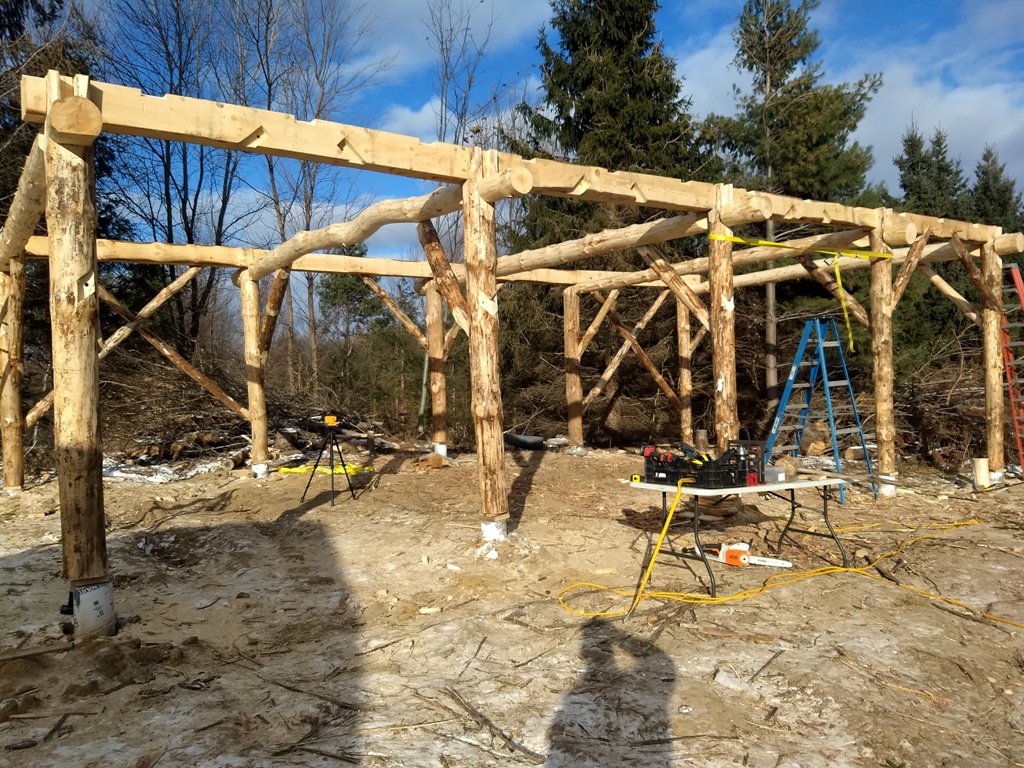
I also recently spent some time with Deane Hillbrand at his home and shop in Sturgeon Lake. I met Deane at a Timber Framers Guild Conference that was hosted by North House back in May.
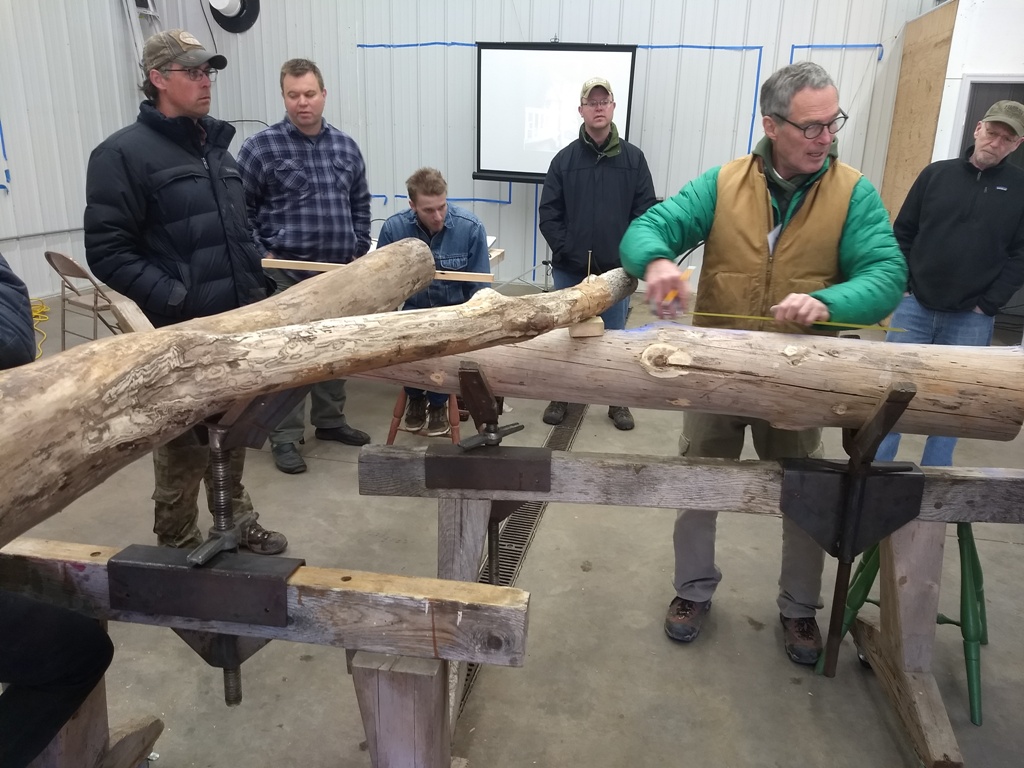
He shared his knowledge of creating scribed round on round mortise and tenon joinery which he incorporates skillfully into beautiful timber framed buildings. He was kind enough to host me and give me a brief tutorial on some essential skills. Together we layed out, cut, and assembled a bent for a wood shed project.
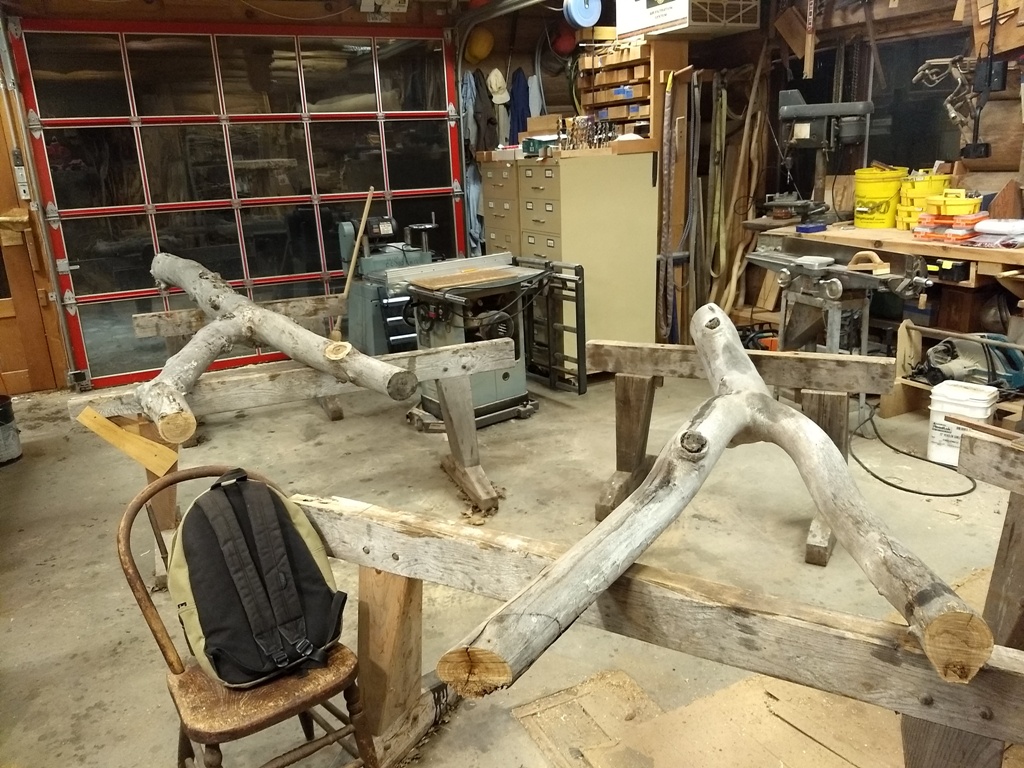
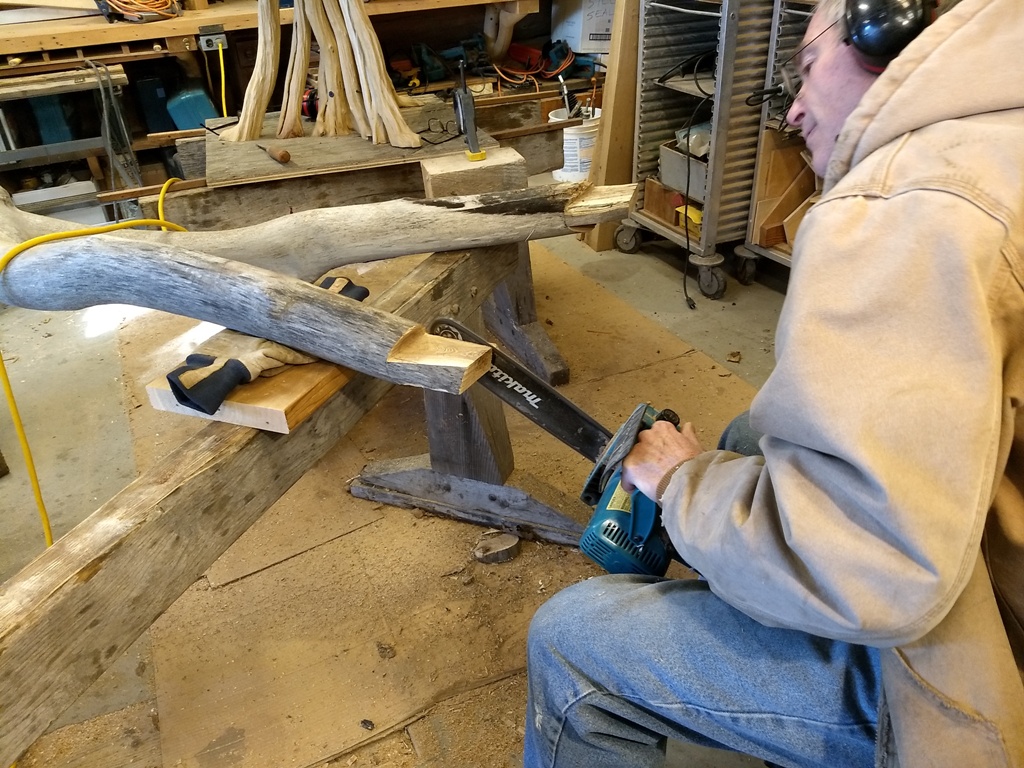
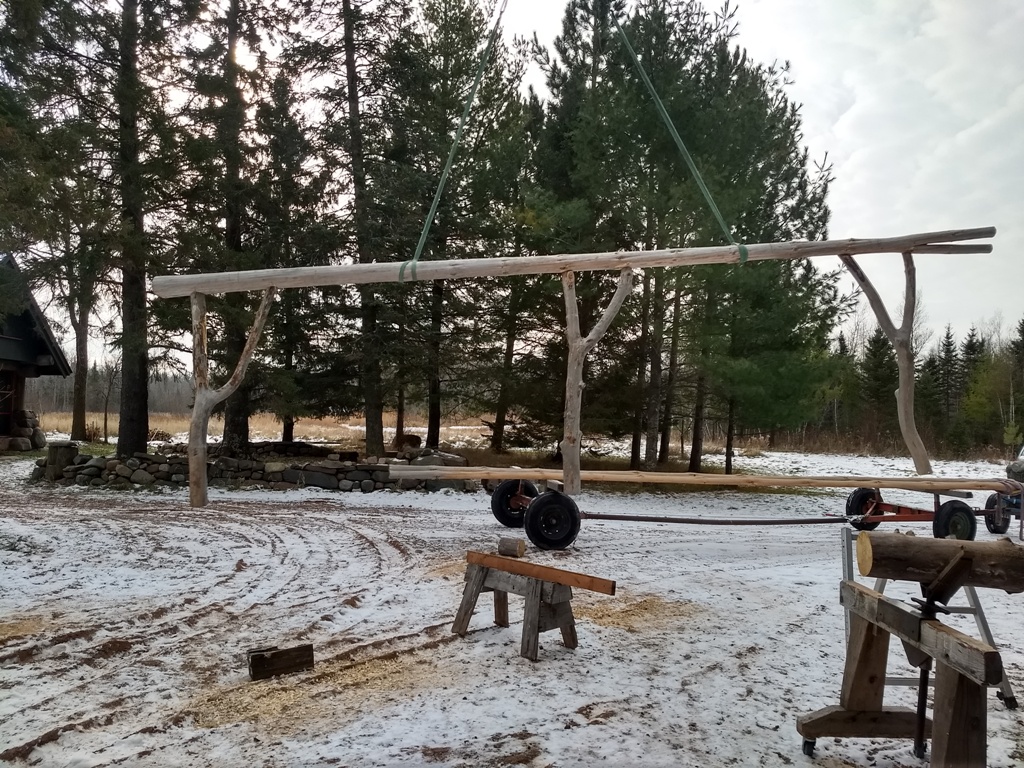
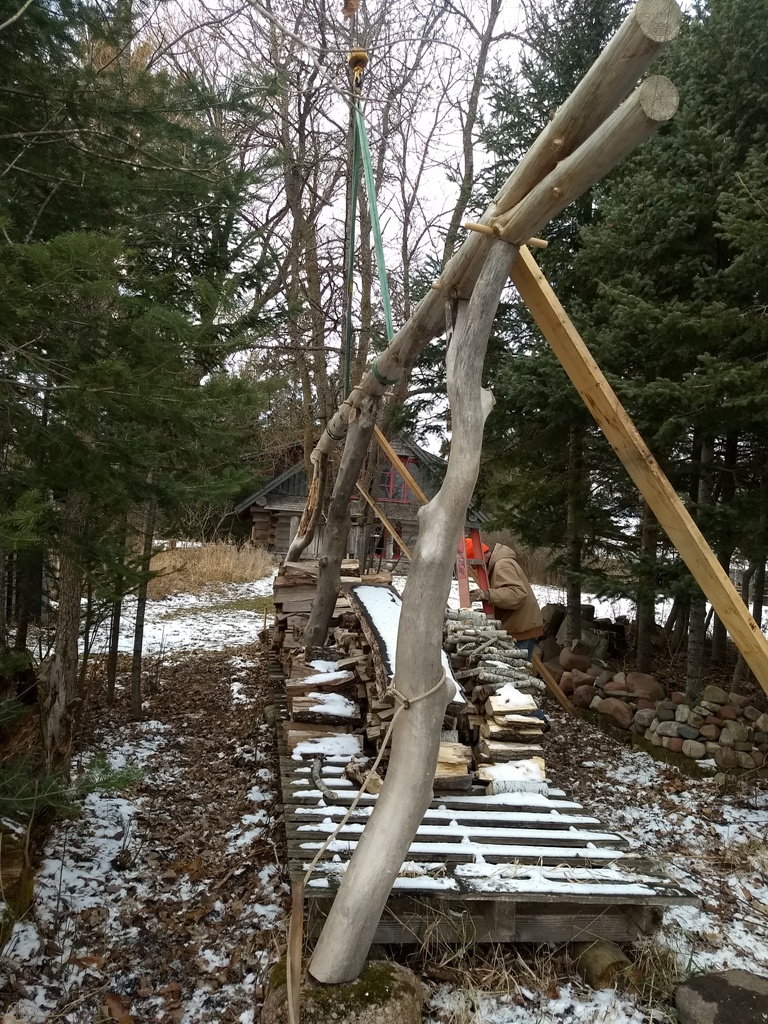
Deane collects forked black ash trees that typically have a leading trunk with angled branch that functions as a knee brace. By leaving components in the round the fibers remain in tact and therefore add to the strength of the piece.
I’m currently working on some display pedestals for an upcoming exhibit that will feature a number of my wooden ale hens. This spring Jim Sannerud and I experimented with some aspen trees.
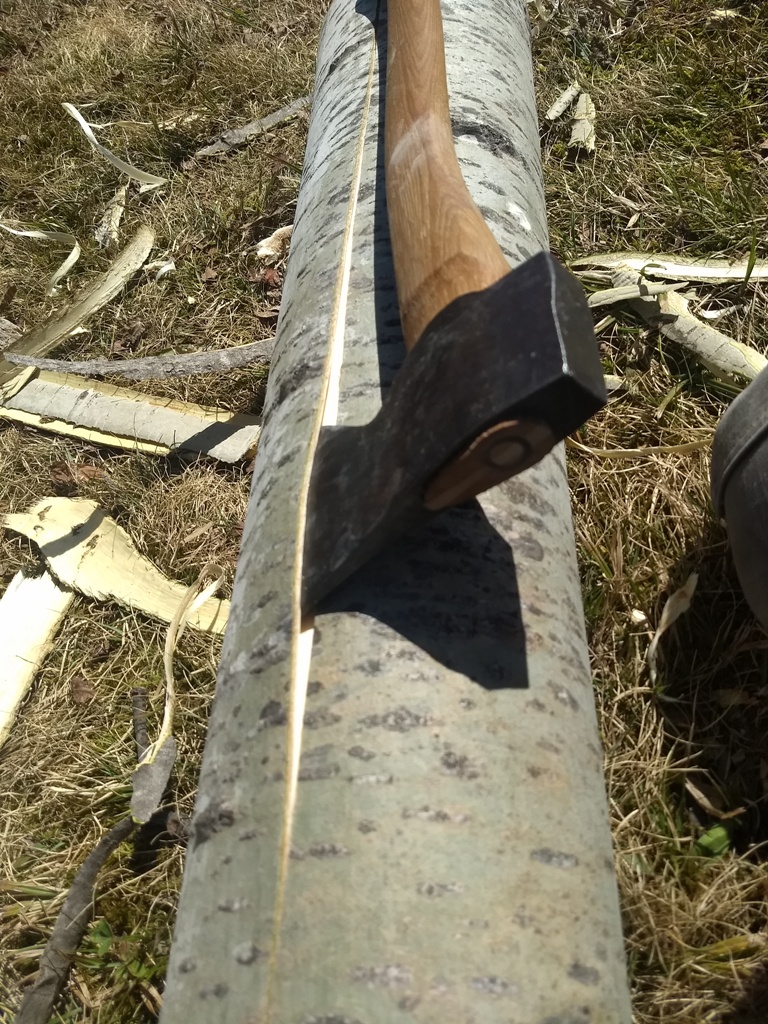
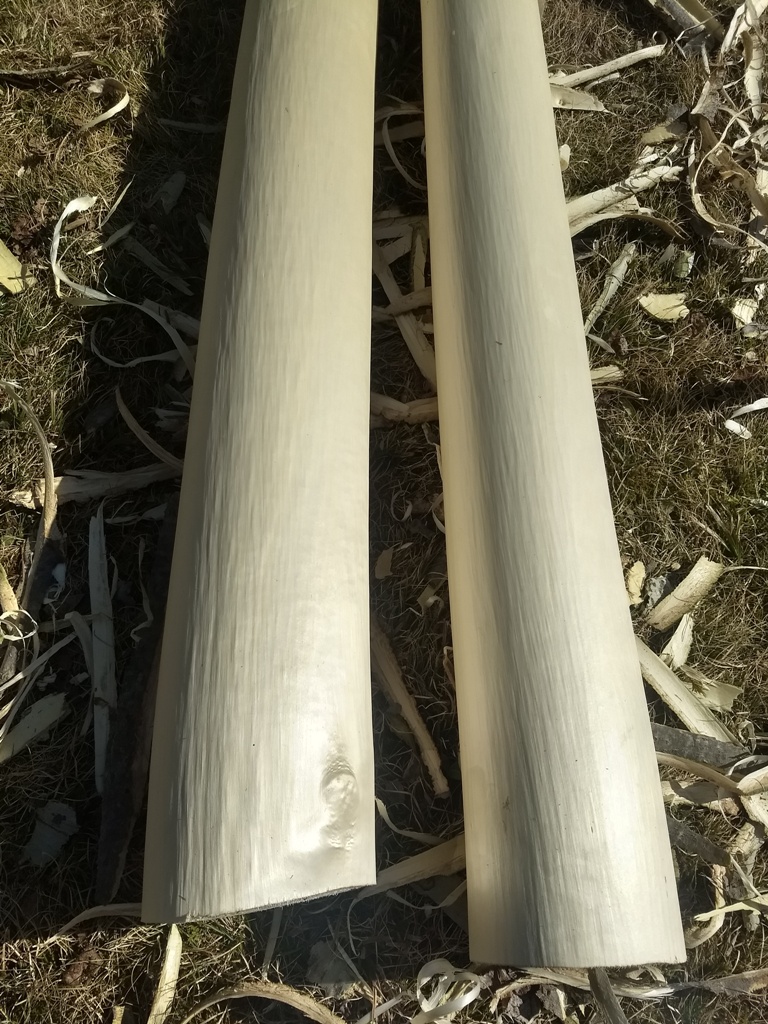
Often in the spring when there’s significant sap flow the inner park readily slips away from the wood allowing a person to strip bark very cleanly revealing the interesting texture of the underlying wood. With a little chalky white paint and some leafy looking platforms they’re shaping into some nice displays.
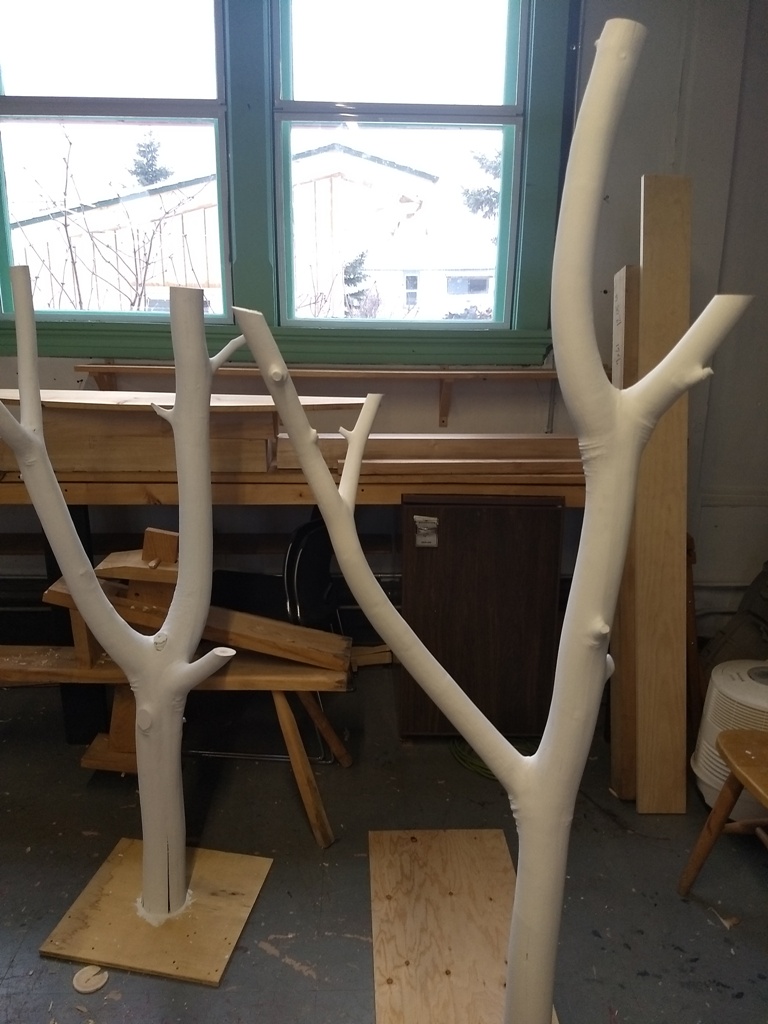
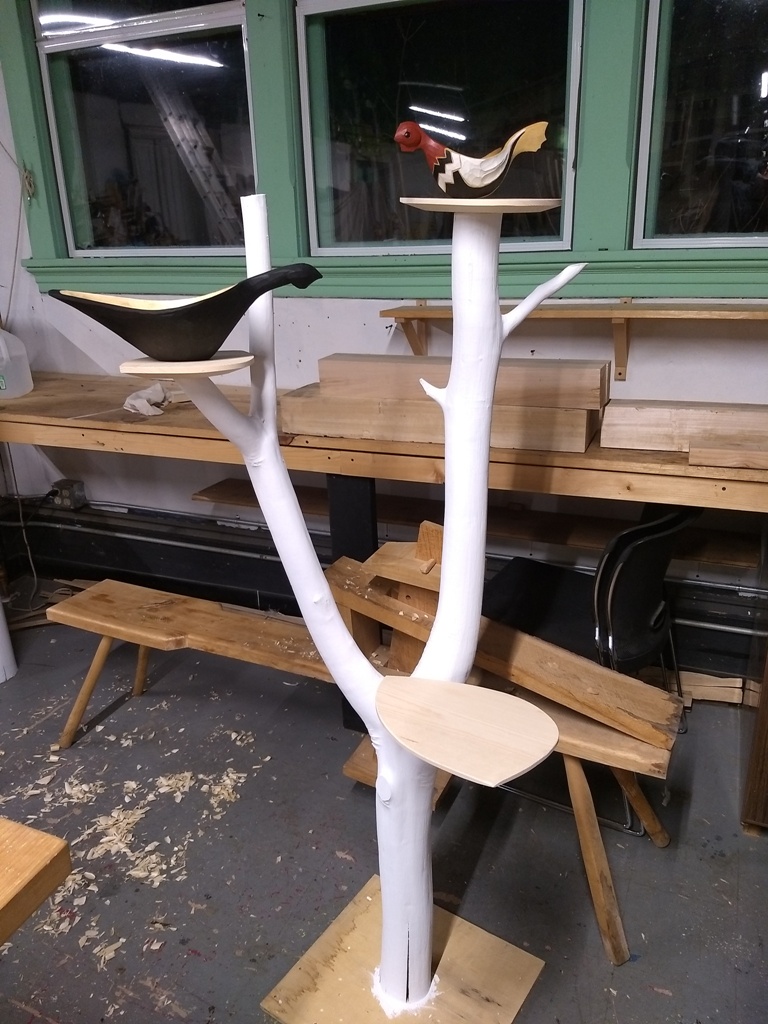
All these experiments offer a great opportunity to reflect on my appreciation of this fascinating material.